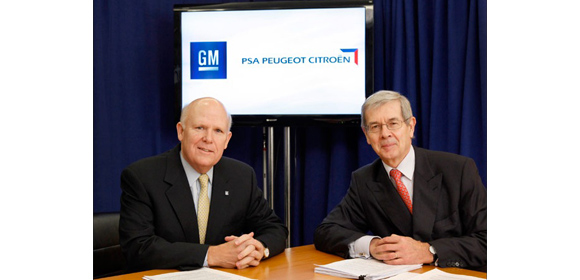General Motors and PSA Peugeot Citroën announced the creation of a long term and broad-scale global strategic alliance. Does that mean there is a greater chance that Citroëns may soon be returning to our shore? Don’t hold you breath. Here’s the reality behind the deal:
PSA Peugeot Citroën has had a very tough time in the European market. It announced plans to reduce investments and marketing spending as part of a goal to save 1 billion euros (an increase from a previous 800 million euros). The steeper cuts come after their automotive division lost 92 million euros in 2011. It announced plans to sell 1.5 billion euros in assets to reduce debt, which sat at 3.4 billion euros.
Meanwhile General Motors was also unprofitable with its European unit Opel and its U.K. sister brand Vauxhall. In 2011 they lost $747 million last year on Opel alone, even as the company posted a large overall profit. GM sought in early 2009 to sell Opel but later changed its mind.
Automobile manufacturers risk losses when they use less than 90 percent of their production capacity. PSA Peugeot Citroën is projected to use a mere 62% of its European capacity in 2012, GM just 74% at Opel.
PSA Peugeot Citroën were initially in negotiations with Mitsubishi to try to shore up manufacturing costs and offset its massive debt. Talks were not progressing well, and so they decided to talk to a bigger player, GM, along the same lines.
The GM PSA Peugeot Citroën deal came about to leverage the combined strengths and capabilities of the two companies, with the goals of improving profitability and strengthening their competitiveness in Europe.
Could this be a tough sell at home for the French carmaker? French Labour Minister Xavier Bertrand was quoted saying any deal “must allow for the development of jobs in France, above all. I said: ‘jobs, jobs, jobs.’ I am adamant on that point.” However labour costs at its French factories are more than three times higher than in Eastern Europe and other lower-wage countries. Something is going to have to give. Peugeot Citroën depends on Europe for almost 60 per cent of its sales. Could a deal with GM make sense to the extent that it provides access to growing markets overseas? Perhaps, but doubtful. GM does not want more models, similar to what they offer, competing for market share.
Fact is the alliance is structured around two main objectives: the sharing of vehicle platforms, components and modules; and the creation of a global purchasing joint venture for the sourcing of commodities, components and other goods and services from suppliers. With annual purchasing volume expected in the order of $125 billion, cars benefiting from these savings are slated to appear starting in 2016. There’s little question that savings for each side are the true foundation of the deal.
The press release states that “each company will continue to market and sell its vehicles independently and on a competitive basis”. We can take solace that GM didn’t make a majority investment in Peugeot Citroën PSA. The last time they did that in Europe (with their purchase of Saab), the result was disastrous, particularly for Saab!
If you are counting on the GM investment being a factor in Citroën returning to the North American market, you’ll probably need to temper your expectations. At best it sounds like the GM – Peugeot Citroën deal is going to net you the opportunity to buy a Citrolet a few years down the road.

